|
Your search criteria found 983 images Feature Name |
| My List |
Addition Date
|
Target | Mission | Instrument | Size |

|
1996-01-15 |
Hubble Space Telescope |
WFPC2 |
1771x1819x3 | |

|
|||||

|
1996-01-16 |
Hubble Space Telescope |
WFPC2 |
1280x1280x3 | |
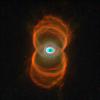
|
|||||

|
1996-01-29 | N Rings |
Voyager |
VG ISS - Wide Angle |
785x1000x1 |

|
|||||

|
1996-01-29 | U Rings |
Voyager |
VG ISS - Wide Angle |
782x763x1 |
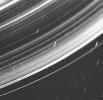
|
|||||

|
1996-02-08 | Gaspra |
Galileo |
Solid-State Imaging |
810x855x1 |

|
|||||

|
1997-12-18 | Io |
Galileo |
Solid-State Imaging |
390x197x3 |
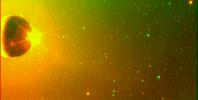
|
|||||

|
1998-03-26 | J Rings |
Galileo |
Solid-State Imaging |
800x410x1 |
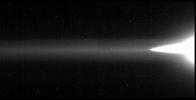
|
|||||

|
1998-06-10 | Jupiter |
Galileo |
Solid-State Imaging |
900x900x3 |
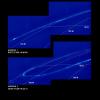
|
|||||

|
1998-06-10 | Jupiter |
Galileo |
Solid-State Imaging |
900x950x3 |

|
|||||

|
1998-06-10 | Jupiter |
Galileo |
Solid-State Imaging |
900x950x3 |

|
|||||

|
1998-06-10 | Jupiter |
Galileo |
Solid-State Imaging |
900x900x3 |
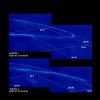
|
|||||

|
1998-08-02 | Saturn |
Hubble Space Telescope |
WFPC2 |
630x900x3 |

|
|||||

|
1998-08-02 | Uranus |
Hubble Space Telescope |
WFPC2 |
490x512x1 |

|
|||||

|
1998-08-03 | Hale-Bopp |
Hubble Space Telescope |
WFPC2 |
800x465x3 |
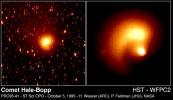
|
|||||

|
1998-10-30 | J Rings |
Voyager |
1715x1706x1 | |
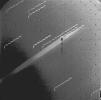
|
|||||

|
1999-06-12 | Moon |
DSPSE |
Star Tracker |
1168x1552x1 |

|
|||||

|
1999-06-19 | U Rings |
Voyager |
VG ISS - Narrow Angle |
740x725x1 |
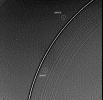
|
|||||

|
1999-07-25 | Neptune |
Voyager |
VG ISS - Narrow Angle |
373x438x1 |

|
|||||

|
1999-07-25 | N Rings |
Voyager |
VG ISS - Narrow Angle |
700x512x1 |
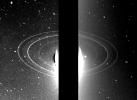
|
|||||

|
1999-10-29 | N Rings |
Voyager |
VG ISS - Narrow Angle |
300x512x1 |

|
|||||

|
1999-12-01 | Doradus Nebula |
Hubble Space Telescope |
WFPC2 |
2508x1790x3 |
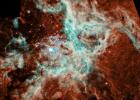
|
|||||

|
1999-12-01 | Globular cluster M22 |
Hubble Space Telescope |
WFPC2 |
514x600x3 |

|
|||||

|
1999-12-01 |
Two Micron All Sky Survey (2MASS) |
Two Micron All Sky Survey (2MASS) |
2425x1498x3 | |
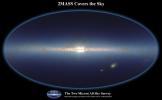
|
|||||

|
1999-12-01 | mysterious object |
Hubble Space Telescope |
WFPC2 |
3000x2400x3 |
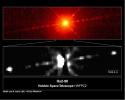
|
|||||

|
1999-12-01 | Altair |
Palomar Testbed Interferometer |
Palomar Testbed Interferometer |
512x511x1 |
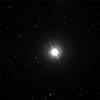
|
|||||

|
1999-12-01 | Horsehead Nebula |
Hubble Space Telescope |
WFPC2 |
853x620x3 |
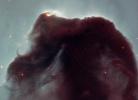
|
|||||

|
1999-12-01 | Galaxy NGC 1512 |
Hubble Space Telescope |
WFPC2 Faint Object Camera Near Infrared Camera Multi-Object Spectrometer |
600x650x3 |

|
|||||

|
1999-12-01 | Galaxy NGC 4622 |
Hubble Space Telescope |
WFPC2 |
853x970x3 |

|
|||||

|
1999-12-01 | Globular cluster M4 |
Hubble Space Telescope |
WFPC2 |
1100x1237x3 |

|
|||||

|
1999-12-02 | Stephan's Quintet,NGC 7319, NGC 7318B, NGC 7318A |
Hubble Space Telescope |
WFPC2 |
2400x3000x3 |

|
|||||

|
1999-12-02 | Galaxy NGC 3079 |
Hubble Space Telescope |
WFPC2 |
434x434x3 |
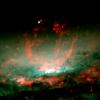
|
|||||

|
1999-12-02 | Galaxy NGC 3079 |
Hubble Space Telescope |
WFPC2 |
2329x1845x3 |
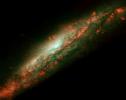
|
|||||

|
1999-12-02 | M82 Galaxy |
Hubble Space Telescope |
WFPC2 |
1487x1522x3 |

|
|||||

|
1999-12-02 | Trifid Nebula |
Two Micron All Sky Survey (2MASS) |
Two Micron All Sky Survey (2MASS) |
930x1408x3 |

|
|||||

|
1999-12-02 | Thackeray's Globules |
Hubble Space Telescope |
WFPC2 |
1480x1498x3 |

|
|||||

|
1999-12-02 | Rotten Egg Nebula |
Hubble Space Telescope |
WFPC2 |
843x794x3 |
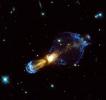
|
|||||

|
1999-12-03 | Galaxy NGC 1850 |
Hubble Space Telescope |
WFPC2 |
758x580x3 |
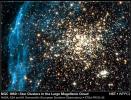
|
|||||

|
1999-12-03 | N44C nebula |
Hubble Space Telescope |
WFPC2 |
1460x1502x3 |

|
|||||

|
1999-12-03 | Ghost Head Nebula |
Hubble Space Telescope |
WFPC2 |
674x674x3 |
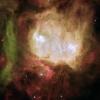
|
|||||

|
1999-12-04 | Whirlpool Galaxy |
Hubble Space Telescope |
WFPC2 |
648x809x3 |

|
|||||

|
1999-12-07 | Galaxy NGC 3310 |
Hubble Space Telescope |
WFPC2 |
849x933x3 |

|
|||||

|
1999-12-09 | Antennae or Ring Tail galaxies |
Two Micron All Sky Survey (2MASS) |
Two Micron All Sky Survey (2MASS) |
456x586x3 |

|
|||||

|
1999-12-10 | Ant nebula |
Hubble Space Telescope |
WFPC2 |
1072x708x3 |
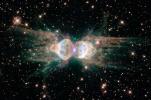
|
|||||

|
1999-12-10 | Hubble -V |
Hubble Space Telescope |
WFPC2 |
640x800x3 |

|
|||||

|
1999-12-15 | Galaxy NGC 4013 |
Hubble Space Telescope |
WFPC2 |
1041x1018x3 |
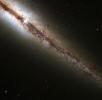
|
|||||

|
1999-12-30 | Edge-on Galaxy ESO 510 G13 |
Hubble Space Telescope |
WFPC2 |
1435x732x3 |
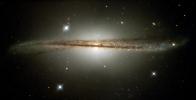
|
|||||

|
2000-02-03 |
Hubble Space Telescope |
WFPC2 |
2292x1480x3 | |
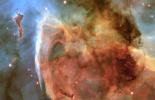
|
|||||

|
2000-02-11 | Masursky |
Cassini-Huygens |
ISS - Narrow Angle |
220x220x1 |
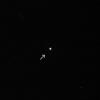
|
|||||

|
2000-03-23 | J Rings |
Voyager |
VG ISS - Narrow Angle |
621x672x1 |

|
|||||

|
2000-09-16 | Mars |
Mars Global Surveyor (MGS) |
Mars Orbiter Camera (MOC) |
776x779x1 |
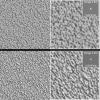
|
|||||

|
2002-07-23 | HD339457 |
Cassini-Huygens |
ISS - Narrow Angle |
505x101x1 |

|
|||||

|
2002-12-21 |
SIM PlanetQuest |
2736x1836x3 | ||
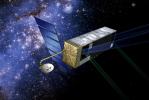
|
|||||

|
2003-02-26 |
Origins |
Keck Interferometer |
720x486x3 | |
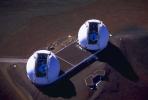
|
|||||

|
2003-03-27 |
Two Micron All Sky Survey (2MASS) |
Two Micron All Sky Survey (2MASS) |
6782x3540x3 | |
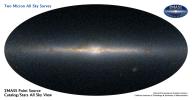
|
|||||

|
2003-03-27 |
Two Micron All Sky Survey (2MASS) |
Two Micron All Sky Survey (2MASS) |
4500x2400x3 | |
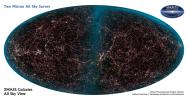
|
|||||

|
2003-05-09 |
Origins |
Keck Interferometer |
1024x768x3 | |
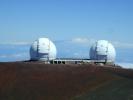
|
|||||

|
2003-05-09 | Borrelly |
Deep Space 1 (DS1) |
Star Tracker |
1400x1050x3 |
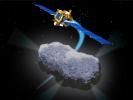
|
|||||

|
2003-05-15 |
Spitzer Space Telescope |
606x441x3 | ||
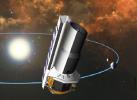
|
|||||

|
2003-05-21 |
Hubble Space Telescope |
WFPC2 |
869x444x3 | |
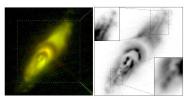
|
|||||

|
2003-05-28 |
Galaxy Evolution Explorer (GALEX) |
GALEX Telescope |
1450x1550x3 | |

|
|||||

|
2003-06-20 |
Terrestrial Planet Finder |
Infrared Coronagraph Infrared Interferometer Visible Light Coronagraph |
2736x1836x3 | |
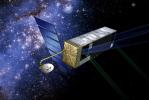
|
|||||

|
2003-07-25 |
Galaxy Evolution Explorer (GALEX) |
GALEX Telescope |
991x1008x3 | |

|
|||||

|
2003-07-25 |
Galaxy Evolution Explorer (GALEX) |
GALEX Telescope |
1008x992x3 | |
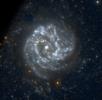
|
|||||

|
2003-09-03 |
Spitzer Space Telescope |
IRAC |
1600x2000x3 | |

|
|||||

|
2003-12-10 |
Galaxy Evolution Explorer (GALEX) |
GALEX Telescope |
6200x6200x3 | |
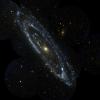
|
|||||

|
2003-12-10 |
Galaxy Evolution Explorer (GALEX) |
GALEX Telescope |
1755x790x3 | |
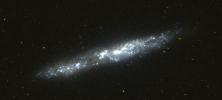
|
|||||

|
2003-12-10 |
Galaxy Evolution Explorer (GALEX) |
GALEX Telescope |
1500x1500x3 | |
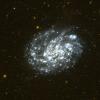
|
|||||

|
2003-12-11 |
Galaxy Evolution Explorer (GALEX) |
GALEX Telescope |
960x960x3 | |
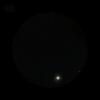
|
|||||

|
2003-12-18 |
Spitzer Space Telescope |
IRAC |
1142x939x3 | |
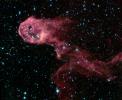
|
|||||

|
2003-12-18 |
Spitzer Space Telescope |
MIPS IRAC |
2332x1616x3 | |
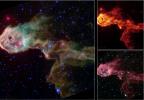
|
|||||

|
2003-12-18 |
Spitzer Space Telescope |
IRAC |
1364x1038x3 | |
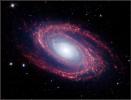
|
|||||

|
2003-12-18 |
Spitzer Space Telescope |
MIPS IRAC |
2286x2334x3 | |

|
|||||

|
2003-12-18 |
Spitzer Space Telescope |
MIPS |
1108x2148x3 | |

|
|||||

|
2003-12-18 |
Spitzer Space Telescope |
IRAC |
1020x643x3 | |
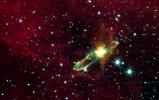
|
|||||

|
2003-12-18 |
Spitzer Space Telescope |
Infrared Spectrograph (IRS) |
2872x2056x3 | |
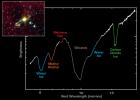
|
|||||

|
2003-12-18 |
Spitzer Space Telescope |
MIPS |
658x430x3 | |
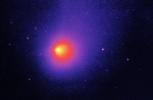
|
|||||

|
2004-01-13 | Tarantula Nebula |
Spitzer Space Telescope |
IRAC |
1384x908x3 |
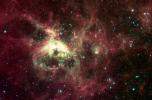
|
|||||

|
2004-02-12 | Cepheus |
Spitzer Space Telescope |
IRAC |
1103x1293x3 |

|
|||||

|
2004-03-08 |
Spitzer Space Telescope |
IRAC Multiband Imaging Photometer (MIPS) |
2262x1899x3 | |
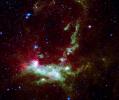
|
|||||

|
2004-03-11 |
Mars Exploration Rover (MER) |
Panoramic Camera |
1024x1024x1 | |
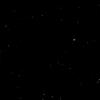
|
|||||

|
2004-03-12 |
Mars Exploration Rover (MER) |
Panoramic Camera |
1024x1024x1 | |
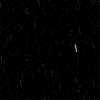
|
|||||

|
2004-04-13 |
Spitzer Space Telescope |
IRAC |
3652x1936x3 | |
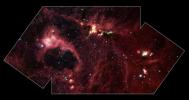
|
|||||

|
2004-04-13 |
Spitzer Space Telescope |
MIPS |
2499x779x3 | |

|
|||||

|
2004-04-13 |
Spitzer Space Telescope |
IRAC |
3652x1936x3 | |
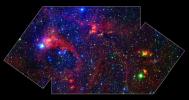
|
|||||

|
2004-04-13 |
Spitzer Space Telescope |
IRAC Multiband Imaging Photometer (MIPS) |
3600x2556x3 | |
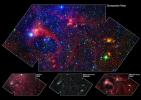
|
|||||

|
2004-04-13 |
Spitzer Space Telescope |
IRAC Multiband Imaging Photometer (MIPS) |
3588x4224x3 | |

|
|||||

|
2004-05-11 |
Spitzer Space Telescope |
IRAC |
1530x776x3 | |

|
|||||

|
2004-05-11 |
Spitzer Space Telescope |
IRAC |
708x570x3 | |
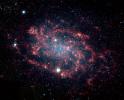
|
|||||

|
2004-05-24 |
Galaxy Evolution Explorer (GALEX) |
GALEX Telescope |
3840x3840x3 | |

|
|||||

|
2004-05-27 | RCW 49 Nebula |
Spitzer Space Telescope |
IRAC |
1520x1520x3 |
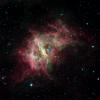
|
|||||

|
2004-05-27 |
Spitzer Space Telescope |
1600x1200x3 | ||
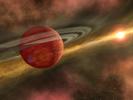
|
|||||

|
2004-06-28 | NGC 7331 |
Spitzer Space Telescope |
IRAC |
1239x805x3 |
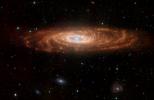
|
|||||

|
2004-08-09 | NGC 246 |
Spitzer Space Telescope |
IRAC |
1018x1018x3 |
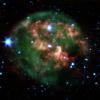
|
|||||

|
2004-09-07 |
Spitzer Space Telescope |
IRAC |
1125x1125x3 | |
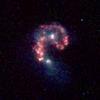
|
|||||

|
2004-09-07 |
Spitzer Space Telescope |
IRAC |
1125x1125x3 | |
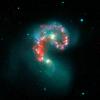
|
|||||

|
2004-09-09 |
Hubble Space Telescope |
Advanced Camera for Surveys |
1417x1417x3 | |
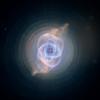
|
|||||

|
2004-10-06 |
Spitzer Space Telescope |
IRAC |
1090x1090x3 | |
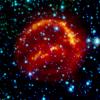
|
|||||

|
2004-10-08 |
Wide-field Infrared Survey Explorer (WISE) |
WISE |
219x213x3 | |
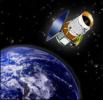
|
|||||

|
2004-10-12 |
Spitzer Space Telescope |
IRAC |
602x602x3 | |
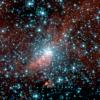
|
|||||

|
2004-10-18 |
Spitzer Space Telescope |
IRAC |
3000x2400x3 | |
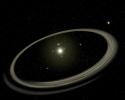
|
|||||
 |
 |
 |
 |
 |
 |
 |
 |
 |
 |

|
|
| 1-100 | 101-200 | 201-300 | 301-400 | 401-500 | 501-600 | 601-700 | 701-800 | 801-900 | 901-1000 |
| Currently displaying images: 1 - 100 of 983 |